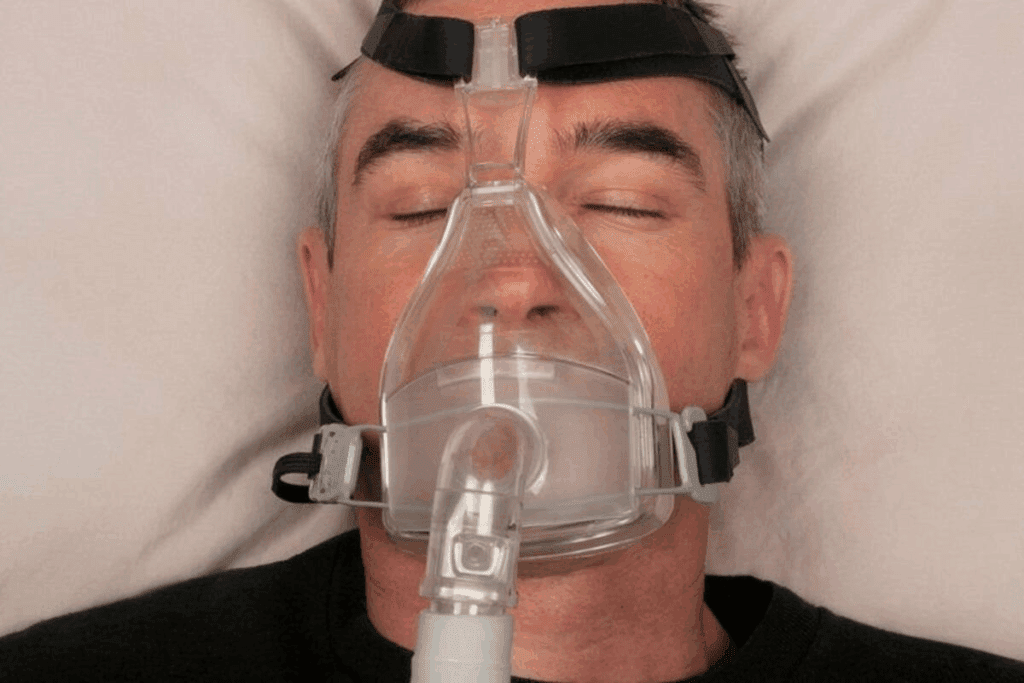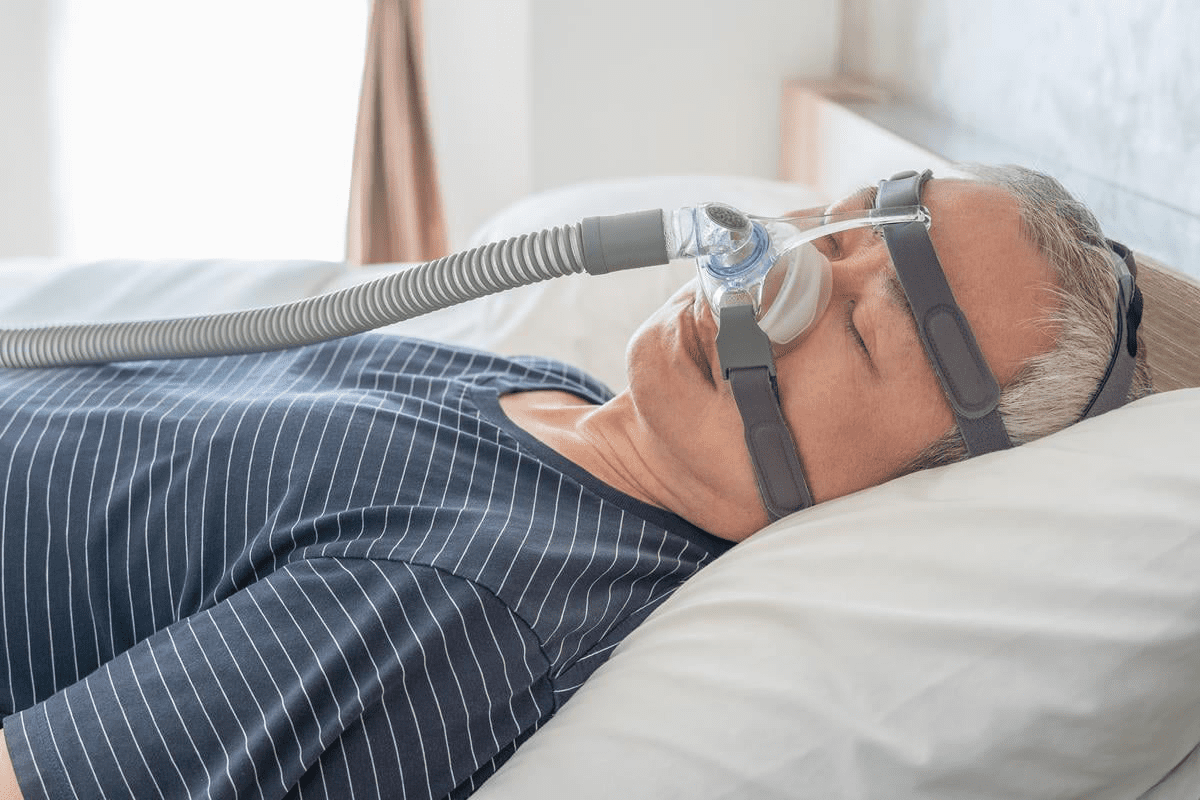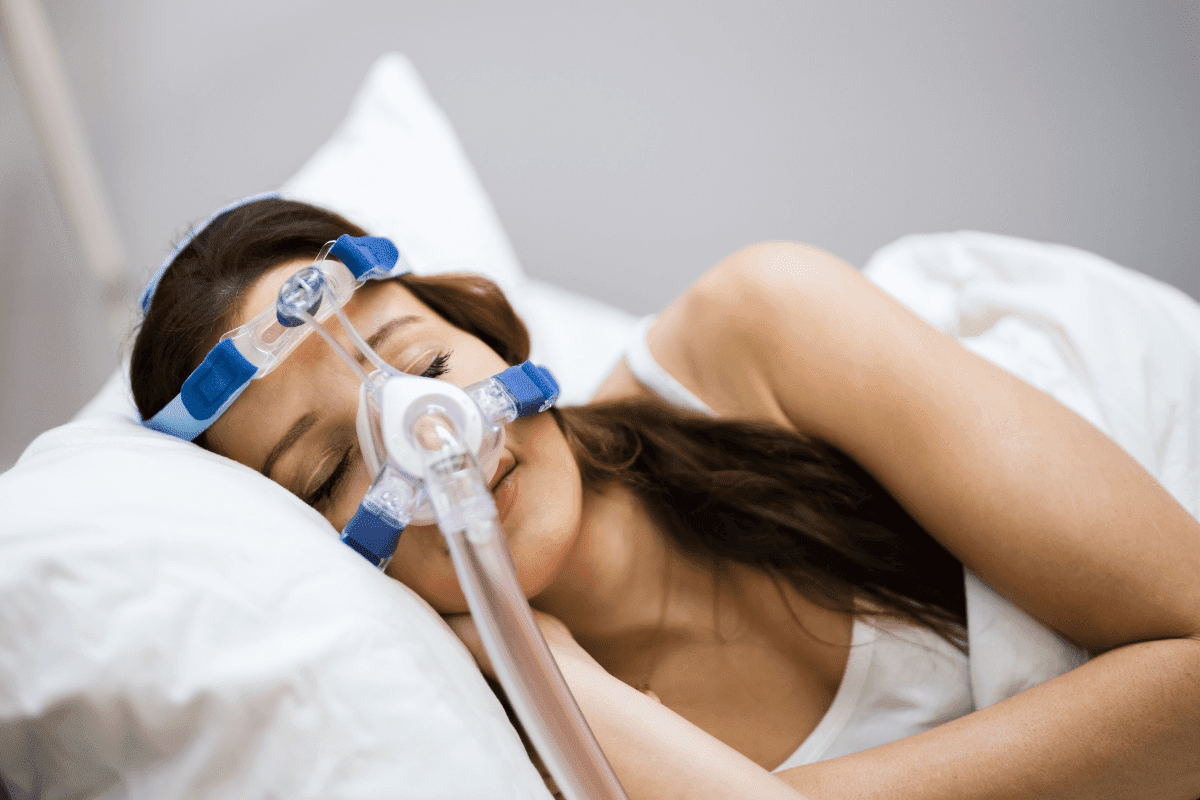Last Updated on October 31, 2025 by Saadet Demir

Obstructive sleep apnea (OSA) is a condition where the airway narrows during sleep. For those who can’t use CPAP therapy, sleep apnea surgery is a promising treatment.
We know OSA can really affect your life. Surgical procedures can offer a lasting fix. They work by opening up the airway.
We aim to give a detailed look at surgical options for sleep apnea. This way, patients can make better choices about their health.
How to correct sleep apnea with surgical sleep apnea options designed to enlarge and stabilize the airway.

Obstructive Sleep Apnea (OSA) is a sleep disorder that affects many people. It happens when the upper airway narrows or collapses during sleep. This disrupts sleep quality and can harm overall health.
Several factors contribute to Obstructive Sleep Apnea. Obesity is a big risk because extra weight can block the airway. Other causes include anatomical abnormalities like a deviated septum or enlarged tonsils.
Age, gender, and family history also play a part. Knowing these causes helps find the best treatment.
The symptoms of Obstructive Sleep Apnea are noticeable. Snoring is a common sign. Other symptoms include daytime sleepiness, morning headaches, and cognitive impairment.
If not treated, OSA can cause serious health problems. These include cardiovascular disease, diabetes, and depression. Treating OSA is key to avoiding these issues and improving life quality.

Surgery is considered when other treatments don’t work. Continuous Positive Airway Pressure (CPAP) therapy is usually the first choice for Obstructive Sleep Apnea (OSA). But, it’s not always effective or easy for patients to use.
Up to 50% of patients on CPAP therapy can’t handle it or don’t stick to it. Reasons include mask discomfort, claustrophobia, or trouble breathing against the pressure.
CPAP failure or intolerance is a big problem. It leads to looking for other treatments, like surgery. The choice to have surgery depends on a detailed check-up and the failure of other treatments.
Several signs point to the need for surgery for sleep apnea. These include:
We look at these signs to decide if surgery is right.
Surgical treatment for sleep apnea has many advantages. These include:
Benefit | Description |
Improved Quality of Life | Reducing sleep disruptions can enhance overall well-being and daily functioning. |
Reduced Health Risks | Surgery can decrease the risk of cardiovascular disease, stroke, and other complications associated with untreated sleep apnea. |
Independence from CPAP | Successful surgery can eliminate the need for CPAP therapy, improving patient comfort and compliance. |
Understanding the benefits and signs for surgery helps us decide when it’s the best choice for sleep apnea.
A thorough pre-surgical evaluation is key to finding the right surgery for sleep apnea patients. It includes various tests and exams to make a treatment plan that fits each patient’s needs.
Diagnosing obstructive sleep apnea (OSA) starts with overnight sleep studies, called polysomnography. These studies track brain waves, muscle activity, and heart rate while the patient sleeps. They help us see how severe OSA is and what sleep patterns are like.
Other tools like home sleep apnea testing (HSAT) might also be used. HSAT is easier to use at home and gives important sleep information.
Finding where the blockage is is important for choosing the right surgery. Sleep endoscopy lets us see the upper airway during sleep to find the blockage. We might also use CT scans or MRI to look at the airway’s structure in detail.
After diagnosing and finding the blockage, we check if the patient is a good candidate for surgery. We look at their health, how severe their OSA is, and their airway’s shape. Then, we create a treatment plan that fits their needs best.
Diagnostic Tool | Purpose | Information Provided |
Polysomnography | Diagnose OSA severity | Sleep patterns, brain waves, muscle activity, heart rate |
Home Sleep Apnea Testing (HSAT) | Monitor sleep patterns at home | Oxygen levels, airflow, breathing patterns |
Sleep Endoscopy | Visualize upper airway obstruction | Site of obstruction during sleep |
CT/MRI Scans | Assess airway anatomy | Detailed images of upper airway structure |
By using all these diagnostic tools, we can make a detailed treatment plan. This plan is tailored to each patient, making surgery more likely to succeed.
Upper airway surgeries are now a key treatment for sleep apnea. They aim to clear blockages in the airway. This helps improve breathing during sleep.
UPPP surgery removes extra tissue in the throat. This includes the uvula and parts of the soft palate. It’s meant to make the airway wider and reduce blockages at night. UPPP is often chosen for those with a lot of extra tissue in the upper airway.
Tonsillectomy and adenoidectomy remove tonsils and adenoids, respectively. These surgeries work well for kids, as big tonsils and adenoids often cause sleep apnea. In adults, removing big tonsils can also help if they block the airway.
ESP is a newer surgery that widens the upper airway. It moves and strengthens the soft palate muscles. This makes breathing easier, and it’s great for those with airway collapse.
These surgeries offer different ways to treat sleep apnea. Each has its own benefits and is chosen based on the patient’s needs and sleep apnea type.
Nasal surgery is key for treating obstructive sleep apnea (OSA). It helps by improving nasal airflow. This makes breathing easier during sleep, helping OSA patients breathe better.
A deviated septum often causes nasal blockage. Septoplasty fixes this by straightening the septum. This makes breathing through the nose easier, helping patients sleep better.
Turbinate bones can block the nose if they’re too big. Turbinate reduction makes these bones smaller. This helps air flow better through the nose, improving sleep.
The nasal valve area can also block airflow. Nasal valve correction surgery fixes this by supporting the valve. This helps prevent collapse during breathing, which is good for sleep apnea patients.
These surgeries can be done alone or together, based on the patient’s needs. They help manage sleep apnea, even for those who can’t use CPAP therapy.
Maxillomandibular advancement surgery is a top choice for treating obstructive sleep apnea (OSA). It moves the jaw to open up the airway. This surgery greatly improves life for those with severe OSA.
This surgery moves the upper and lower jaw forward to widen the airway. It’s very effective because it fixes the main problem of OSA: a narrow airway. Oral and maxillofacial surgeons or otolaryngologists with sleep apnea expertise perform it.
The surgery cuts the jaw bones and moves them forward. This makes the airway bigger and can also improve facial looks. The aim is to move the jaw enough to help breathing without changing how the face looks too much.
Research shows maxillomandibular advancement surgery works well for OSA. Success means a big drop in the Apnea-Hypopnea Index (AHI), which shows how bad sleep apnea is. Many patients see big improvements in their symptoms.
“Maxillomandibular advancement surgery is one of the best treatments for obstructive sleep apnea. It can cure or greatly improve symptoms for many people.”
Not everyone with OSA is right for this surgery. Doctors decide based on sleep studies, imaging, and health checks. The best candidates have moderate to severe OSA and haven’t gotten better with other treatments or can’t use CPAP.
Recovery from this surgery takes a few weeks. Patients will have swelling, pain, and need to eat soft foods. They should avoid hard work during this time. It can take months to see the full benefits.
It’s important to know what to expect during recovery. Following the doctor’s advice is key for a good recovery.
New treatments for sleep apnea are coming out, with hypoglossal nerve stimulation being a top choice. This method uses a device to stimulate the hypoglossal nerve. This nerve controls the tongue, helping to keep the airway open at night.
The implant works with the patient’s breathing. It detects breathing patterns at night and moves the tongue forward. This helps prevent the airway from getting blocked.
This innovative technology has shown great promise. It can help reduce sleep apnea in some patients.
Key benefits of hypoglossal nerve stimulation include:
Not everyone with sleep apnea can get this treatment. The criteria are:
We check each patient carefully. We look at how severe their sleep apnea is and their overall health.
The field of sleep apnea surgery is growing fast. New technologies are being developed. These include:
As medical technology continues to advance, we’ll see even better treatments. We’re committed to using the latest and most effective care for our patients.
It’s important to know the risks of sleep apnea surgery before deciding on treatment. Surgery can greatly improve your life, but it comes with possible complications.
Each sleep apnea surgery has its own risks and side effects. For example, Uvulopalatopharyngoplasty (UPPP) might change how you speak or swallow. On the other hand, Maxillomandibular Advancement Surgery could alter your face and jaw.
Side effects of these surgeries include:
Surgical Procedure | Common Side Effects | Typical Recovery Time |
UPPP | Sore throat, difficulty swallowing | 2-4 weeks |
Maxillomandibular Advancement | Facial swelling, jaw stiffness | 6-8 weeks |
Hypoglossal Nerve Stimulation | Numbness, tongue weakness | 4-6 weeks |
Some side effects can last a long time. UPPP might permanently change your voice or swallowing. Maxillomandibular advancement could affect your bite or jaw long-term.
Talking to your doctor about these risks is key. This way, you can fully understand what to expect.
When thinking about sleep apnea surgery, consider the risks and benefits. For many, the better sleep and health are worth the surgery risks.
It’s vital to discuss your specific situation with your doctor. They can help you decide if surgery is right for you.
Knowing the risks and benefits helps you make a smart choice. This ensures you get the best results from your treatment.
The cost of sleep apnea surgery can change a lot. It’s key to look at insurance and other costs. Knowing the financial side helps patients choose the right treatment.
There are many sleep apnea surgeries, each with different prices. Prices depend on the surgery’s complexity, the doctor’s fees, and where it’s done.
Procedure | Average Cost Range | Factors Influencing Cost |
Uvulopalatopharyngoplasty (UPPP) | $10,000 – $20,000 | Surgeon’s fee, hospital charges, anesthesia fees |
Maxillomandibular Advancement Surgery | $20,000 – $40,000 | Complexity of the procedure, surgeon’s experience, hospital stay |
Hypoglossal Nerve Stimulation | $30,000 – $50,000 | Device cost, implantation procedure, follow-up care |
Remember, these prices are just estimates. They can change based on your situation and where you live.
Getting insurance for sleep apnea surgery needs a lot of paperwork. Insurers want to see sleep studies and a diagnosis to approve the surgery.
Patients should work closely with their doctors. This ensures they meet all insurance needs.
When talking to your doctor about surgery, ask important questions. This helps understand the costs and what insurance covers.
Knowing the costs and insurance helps patients make better choices for treating sleep apnea.
Patients thinking about surgery for sleep apnea need to know their options well. We’ve looked at different surgeries, like upper airway and nasal surgeries. We also talked about maxillomandibular advancement and hypoglossal nerve stimulation.
It’s important to think about the good and bad sides of surgery. We’ve talked about how to decide based on your own situation. This includes understanding the need for sleep studies and pre-surgery checks.
Knowing the pros and cons of each surgery is key. We want to help patients make choices that fit their needs. They should talk to doctors about their options, including costs and insurance.
Choosing surgery for sleep apnea is a big decision. It’s about understanding your options and what might happen. By doing this, patients can take charge of their sleep apnea and live better.
Sleep apnea surgery is a set of procedures to treat sleep apnea. It aims to fix problems in the airway that block breathing. This improves sleep and health.
Yes, there are many surgeries for sleep apnea. These include surgeries for the upper airway, nasal surgery, and more. Each one helps in different ways.
Before surgery, a detailed check-up is done. This includes sleep studies and physical exams. It helps find out how bad the sleep apnea is and if surgery is right.
Surgery can greatly improve life quality. It can also reduce sleep apnea symptoms and health risks. This is true for those who can’t use CPAP machines or have big airway problems.
Nasal surgery helps by improving airflow through the nose. This is important because blocked nasal passages can make sleep apnea worse. It can help treatment work better.
This surgery moves the upper and lower jaws forward. It opens up the airway, reducing sleep apnea symptoms. It has been shown to be very effective.
This method involves a device that moves the tongue. It keeps the airway open during sleep. It’s an option for certain patients.
Risks and complications depend on the surgery. They can include common side effects and long-term issues. It’s important to consider these when deciding on surgery.
The cost of surgery varies. It depends on the type of surgery. Costs can differ for upper airway, nasal, jaw, and nerve stimulation surgeries.
Insurance coverage varies. It depends on the surgery, insurance company, and policy. Understanding insurance is key to getting coverage.
Ask your doctor about the best surgery options. Also, ask about outcomes, risks, costs, and insurance. This helps make an informed choice.
National Center for Biotechnology Information. (2025). How to Correct Sleep Apnea With Surgery Options. Retrieved from https://pmc.ncbi.nlm.nih.gov/articles/PMC11476387/
Subscribe to our e-newsletter to stay informed about the latest innovations in the world of health and exclusive offers!
WhatsApp us